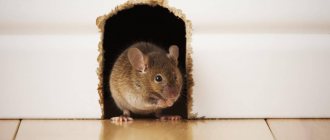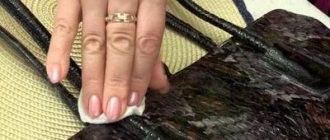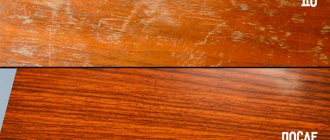Cats are affectionate and graceful animals that create coziness and a feeling of peace in the apartment. After a hard day at work, it’s nice to play with your pets or just listen to their purring. But, despite all these advantages, cats can cause a lot of trouble for humans. Their habit of sharpening their claws on the sofa can infuriate even the most loving owner. To keep upholstered furniture intact, you need to understand why the animal behaves this way and gradually wean the cat from tearing up the sofa.
Why do cats sharpen their claws?
There are many reasons explaining the natural behavior of representatives of the feline family:
- Physiology. The claws are constantly growing, and over time the old nail plate is replaced by a new, sharper and stronger one. During this, the animal experiences discomfort and inconvenience, as hangnails may form on the paws. To get rid of unpleasant sensations and to speed up the process of changing claws, cats sharpen them on what they consider to be fairly hard surfaces.
- Cats fight for territory. Veterinarians and zoologists say that the tips of a cat's paw pads contain sweat glands necessary for unique scent marks. Thus, the cat makes it clear that he is the boss here.
- This is a kind of fitness to maintain physical shape. While sharpening its claws, the cat uses many muscles, thereby subjecting them to considerable stress.
- Fighting stress. Perhaps damaged furniture and tattered wallpaper are the result of a nervous shock the cat has experienced, or he is simply trying to attract your attention.
Cats' Favorite Surfaces
Probably, upholstered furniture most often suffers from cat claws. It is not for nothing that cats choose armchairs, poufs or sofas as victims; their choice is not accidental. If the animal lives in a natural environment, the main accessory for manicure procedures is tree bark; in an apartment, the cat has no choice but to use an alternative option - upholstered furniture.
In addition, purrs do not mind testing window curtains, carpets, cabinet furniture facades, etc. for strength. There are also surfaces that cats are not interested in:
- ceramic tile;
- stone;
- plaster;
- plastic;
- linoleum;
- parquet;
- laminate and others.
Unfortunately, the materials listed are not used to make furniture, so your furnishings are still at risk. To somehow protect the upholstery or hide existing damage, you can use protective covers or restore the furniture. Next, we will talk about methods that allow you to wean a cat from tearing up furniture and are aimed at re-educating it.
Reasons for this behavior
Typically, cats that are raised from a young age quickly understand the rules established in the home. There are several possible reasons why a cat living in a house allows itself to tear up wallpaper and furniture upholstery. Let us note the main ones.
- Paw warm-up. Animals need a kind of gymnastics for their paws. By tensing and relaxing the muscles of their paws, they keep themselves in excellent shape. This exercise not only warms up the muscles, but also perfectly develops the toes.
- Stress relief. Often, cats, in addition to tearing the furniture upholstery, touch it with their paws and bite into it with their teeth. This is an instinct inherent in small kittens; many adults retain it throughout their lives. This way they calm themselves, relieve stress and completely relax before bed.
- Sharpening claws. The stratum corneum of cat claws is renewed by shedding its top layer. This is possible if the cat chews its own claws, but since it is much easier for him to scratch his claws on the carpet, furniture or wallpaper, this is exactly what he does. This is what animals that live at home do (street animals usually dig their claws into the bark of trees).
- Designation of your territory. There are sweat glands on your pet's paws. An animal-scented secretion is released when the cat marks its territory. The pet does this so that other animals in the house do not encroach on the marked sofa or part of the wall by sniffing them. This is how the cat tells other animals who is boss in the house.
- Discomfort from excess length. Cats cannot move comfortably with long claws. Itching appears in the pads of the paws, the claws acquire hangnails, and walking becomes painful. At this moment, the animal doesn’t care what to pull its claws on, just to get rid of the problem that has arisen. It can tear not only wallpaper or upholstery, but also wooden furniture.
Spray bottle in the fight against cat claws
You can try to stop your cat from scratching the sofa using a regular spray bottle filled with clean water.
It is a well-known fact that representatives of the cat breed do not like water and avoid contact with it in every possible way. This can be used in the fight to preserve the normal appearance of your apartment. As soon as the purr decides to sharpen its claws on your favorite sofa, direct a stream of water at it and thoroughly wet the scoundrel.
Advantages of the method:
- works after systematic punishment;
- does not require the purchase of special devices;
- does not come with any costs.
Minuses:
- the technique is effective only when you record the cat’s intention and immediately punish it;
- As soon as the smart cat is left unwatched, he will continue his dirty deed without delay.
Cats don't like strong scents - we use this against them
If spraying with cold water does not bring results, you need to look for a new effective method that will help bring some sense to the animal. Many breeders use scents in this matter, for example, a bright citrus aroma.
In some cases, it is enough to put a slice of lemon next to your favorite place for manicure and the cat will not repeat his old mistakes for a long time, leaving his favorite carpet alone. You can use citrus essential oils, but under no circumstances apply them to the damaged area, so that you don’t have to figure out how to remove the resulting stains. Specialized veterinary stores have special repellent sprays and fumigators:
Pros:
- efficiency 99.9%.
Minuses:
- aroma traps will have to be constantly updated, since natural odors quickly disappear.
Scotch tape will help preserve furniture
If for some reason the previous two methods did not work or did not suit you, try retraining the cat using regular double-sided tape.
The fact is that cats really don’t like it when their paws stick to something, so they won’t sharpen their claws on a sticky surface. To test this method in practice, stick a sufficient amount of tape to the damaged side of the furniture, curtain, or window sill.
Pros:
- the cat will not want to deal with the unpleasant sticky surface and will lose interest in it;
Minuses:
- Because of the sticky tape, the interior will, of course, not benefit; you will have to endure some inconveniences until the bad habit is eradicated.
What not to do
One cannot be inconsistent in weaning an animal from a bad habit. This means that it is useless to scold the cat once for a mistake, and a second time to ignore it. Every crime noticed must be punished.
- You cannot hit a cat; you can scare it with a slap of a towel or rolled up paper. The animal will not experience pain, but will feel the effect of surprise - as in the case of a loud shout or the ringing of a rattle.
- An animal cannot be punished by being locked in a room, left without food or drink - it will definitely not understand why such harsh methods were applied to it, and will only suffer. Particularly sensitive people may become ill due to a bad attitude.
- And of course, in no case should you wean your cat from damaging furniture or wallpaper if there is no place in the house specially equipped for these matters. A cat will not be able to avoid sharpening its claws at all: this is the same need as eating, drinking, sleeping and relieving itself. Therefore, scolding a cat before purchasing or creating a scratching post is pointless.
Trimming or declawing
You can get your favorite furry manicure done at a pet beauty salon, use the services of a groomer or veterinarian, or try to master a simple procedure yourself at home. For this you will need a nail clipper.
One of the simplest answers to the question of how to stop a cat from scratching furniture with its claws is help with manicure. If you decide to carry out the manipulation yourself, be patient, ask someone to hold the animal, act with extreme caution so as not to injure the delicate skin of the pet.
Those who have repeatedly unsuccessfully tried to wean a cat from the harmful habit of ruining an apartment often use a drastic remedy to prevent the cat from tearing up the furniture - declawing. From a common sense point of view, this is a barbaric procedure, as a result of which your animal will lose an important part of its body, will not be able to walk outside, will not be able to protect itself from the enemy and will be forced to go through a long rehabilitation period.
Education and training
A cat should not be physically punished for damaging things. Sharpening her claws is a natural behavior for her. The animal will not understand what it has done wrong and will see the owner as an enemy.
Cats are able to grasp cause-and-effect relationships, so to correct their behavior they develop conditioned reflexes:
- After each approach to the scratching post, the pet is encouraged: praised, petted, treated with delicious food.
- Cats cannot tolerate harsh sounds. When trying to scratch furniture, they suddenly clap their hands or knock with metal objects.
- A tin can with coins inside is placed nearby: if the cat touches it, it falls with a roar and scares away the animal.
- At the moment of committing an offense, the pet is sprayed with a stream of water from a spray bottle.
- At the same time, they are taught the prohibitory words “No”, “Ugh”, “No”. Commands are pronounced loudly, with confident intonation.
After these steps, the cat is taken to the scratching post and carefully scraped with its paws along the surface. Educational measures produce results if they are repeated systematically.
Install a scratching post at home
To preserve the original appearance of upholstered furniture, manufacturers of veterinary products have come up with special scratching posts that purrs can use for their intended purpose, without fear of being punished. Veterinarians and breeders recommend accustoming your kitten to a useful device from childhood, so you can be sure that the sofa and other upholstered furniture will definitely not interest the fluffy one.
The choice of scratching posts in the pet store is huge:
- in the form of a house or play complex;
- corners for protecting corners of furniture, connecting walls;
- in the form of a straight board, wave;
- in the form of a column.
These can be floor or wall structures, simplified products in the form of fabric-upholstered boards, or multifunctional houses with a sleeping area and several play compartments. Scratching posts are made from different materials; sesal, jute, natural wood, and carpet are used in production. Whatever option you choose, the main thing is to accustom the cat to it as early as possible. This can be achieved by using a variety of treats to attract attention, including catnip treats.
You can also apply special products to the surface of the scratching post to correct the behavior of the fluffy.
How to stop your cat from scratching furniture using alternative methods
If you have tried all of the listed methods in your arsenal and none of them have proven effective, you need to try alternative methods of combating a bad cat habit:
- Try putting special anti-scratch guards on the cunning pest's claws. Each claw is fitted with a silicone attachment, which is attached to the surface of the claw with glue, which prevents accidental removal of the accessory.
- Furniture covers. To protect your favorite bed, new sofa or comfortable chair in which you like to drink hot tea and watch the evening news from the merciless claws, you can buy protective furniture covers, the material of which will not be of interest to the four-legged pest.
- Considering that cats choose only certain materials for sharpening their claws, you can replace the damaged material with something that will not arouse the purr's interest. So, in place of the destroyed wallpaper, you can put tiles or cover it with plastic panels.
- Try not to leave your cat alone with an object that she mistook for a scratching post; raising pets has not yet been canceled.
Unlike surgical declawing, the pet does not experience pain or significant discomfort, quickly gets used to the changes and eventually stops paying attention to the attachments. The only thing a cat with such a manicure cannot do is jump to a considerable height and damage your furniture, which means that the goal can be considered achieved. After the claws grow back, you will have to repeat the procedure of gluing new pads.
What to do if nothing helps
To solve the problem, if it cannot be solved in other ways, you can use another option that involves unexpected loud sounds to scare away.
Go to radical methods if conventional ones do not help.
Such a factor could be:
- a loud dissatisfied shout: “You can’t!”, “Scram!”;
- the sound of a store-bought rattle;
- use a homemade “scarer” made from a tin can with a handful of coins placed in it.
Use claw covers.
Some people advise using inflated balloons to block the road to a forbidden place. However, not everyone approves of this method, so the choice is up to the owner.
General tips or how to stop a cat from tearing up furniture
Do not forget that representatives of the cat family are very smart and resourceful. To retrain an animal, you will have to “have a heart-to-heart talk with it,” be affectionate and attentive, carefully pointing out errors in behavior.
Aggression and physical punishment do not lead to a positive result; it causes stress in the pet and only aggravates the situation. As for education, you need to adhere to the following principles:
- make sure that the cat does not experience stress, surround it with love and sincere care;
- set the boundaries of what is permitted and do not allow them to be crossed;
- Do not hit a defenseless animal, this is a form of cruelty and is absolutely unacceptable.
We talked about how to wean a cat from tearing up a sofa and other interior items, and dwelled in detail on popular methods of combating a bad habit. You just have to choose which of these options you will use.
Check out the toys, teasers, and treats that will keep your furry pets occupied:
The agony of thought
When an owner hesitates before deciding to get a kitten, questions about its maintenance, nutrition and even treatment are most often not considered. The first, obvious problems will arise immediately after the baby arrives in the house.
Will the kitten go to the litter box? Even inexperienced owners know that it will not be difficult to accustom a cat to cleanliness, since the pet itself strives for cleanliness. The second, overwhelming doubt is the integrity of the wallpaper and furniture. You probably know cat owners who no longer pay attention to tattered wallpaper, curtains, door jambs and a leather sofa in a disastrous state.
You can join the owners who ignore problems, believe me, there are quite a few of them. If this option does not suit you, there are many ways to stop your cat from scratching furniture. However, you need to start with the reasons, that is, finding out the cat’s motivation.
If you correctly understand your pet's needs and allow him to compensate for his desires without harm, no one or nothing will get hurt.











